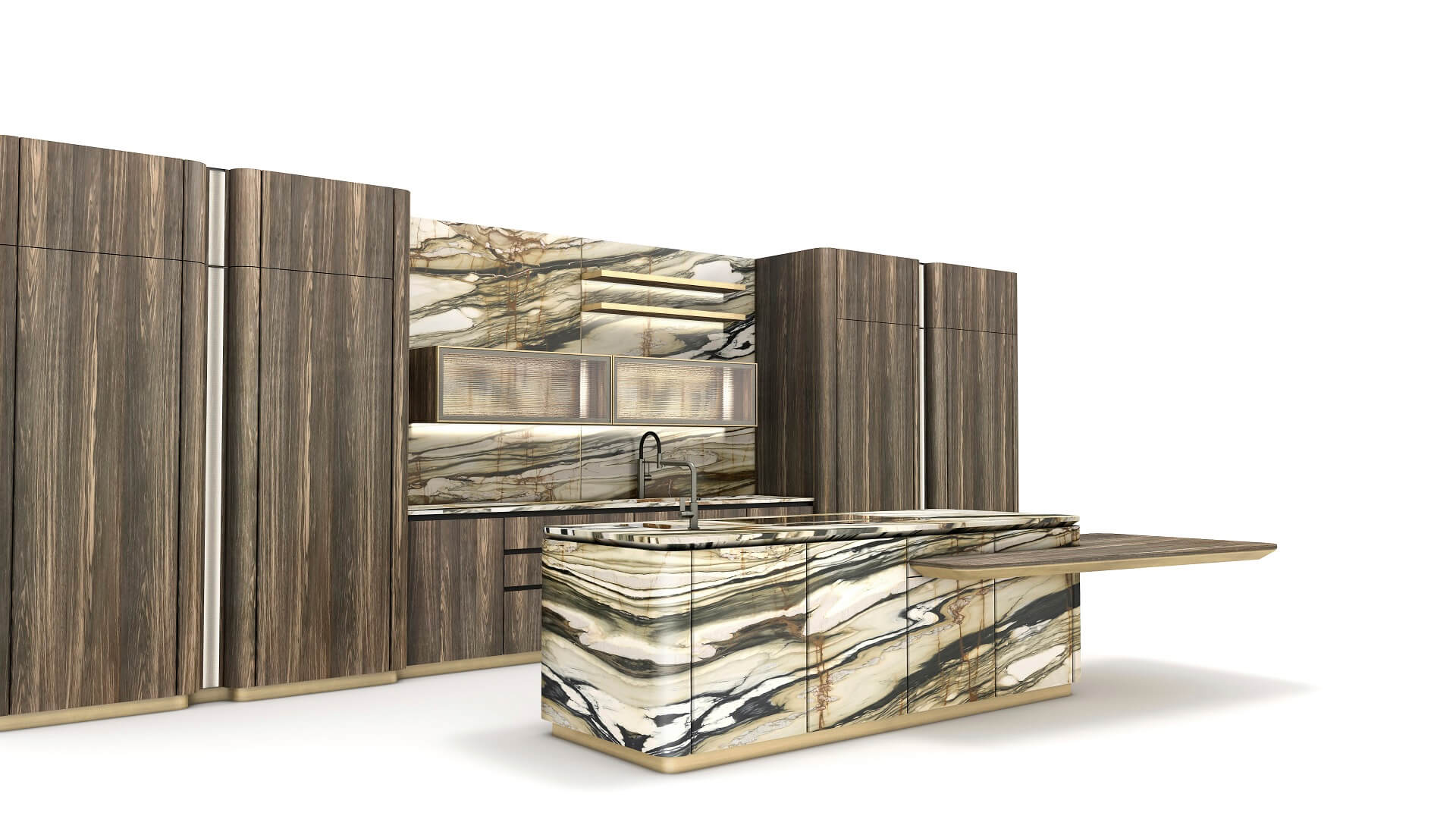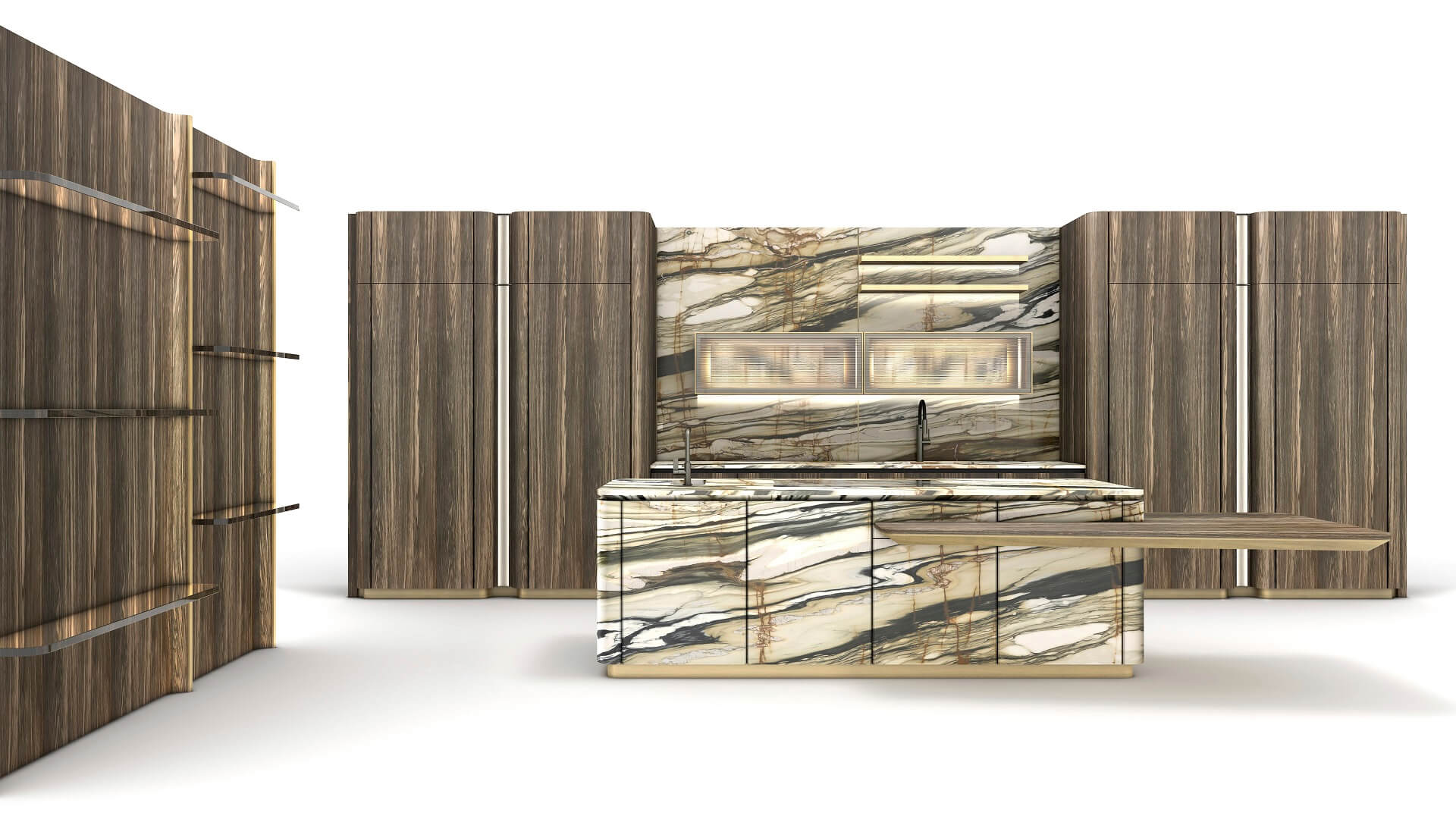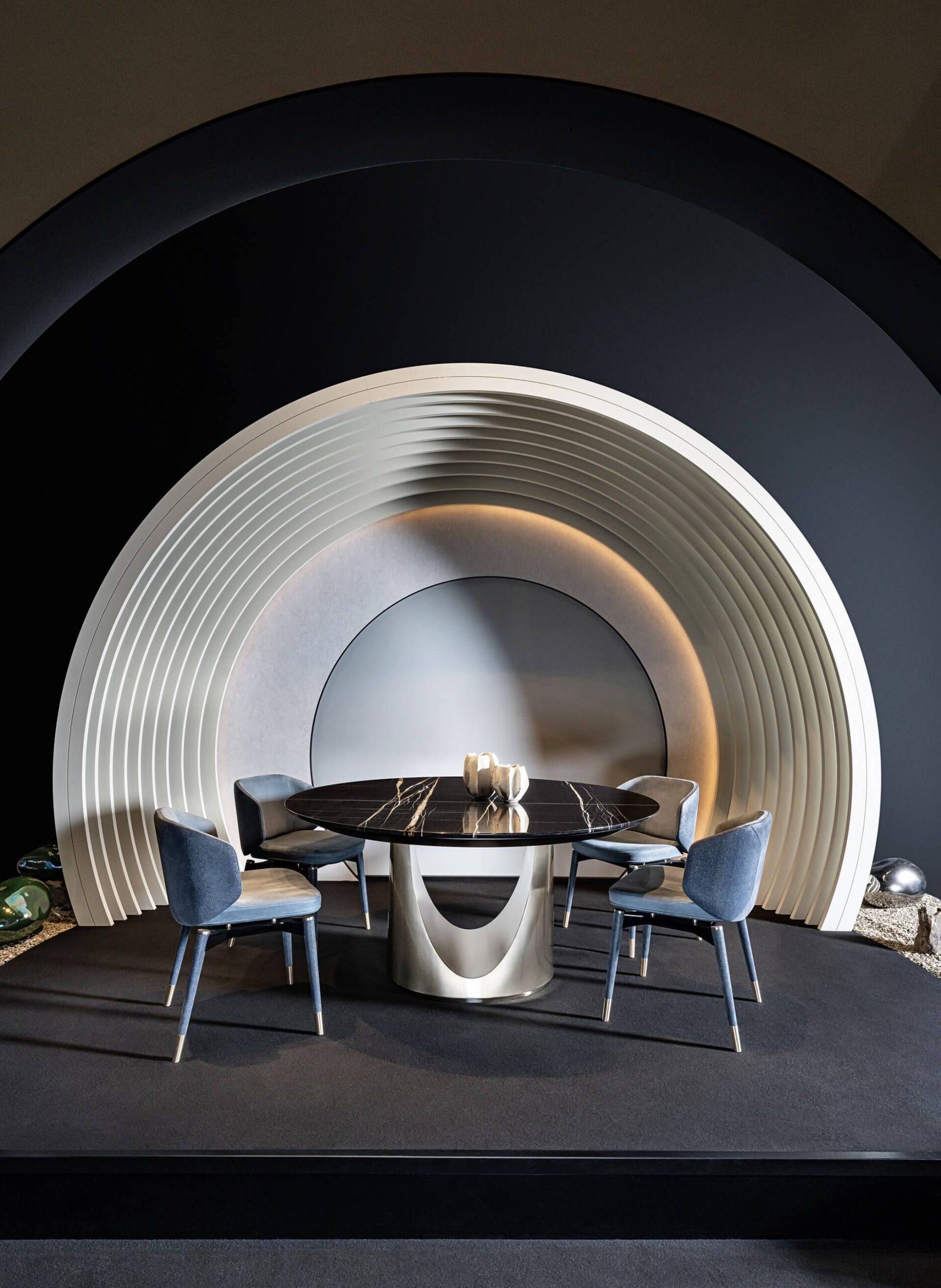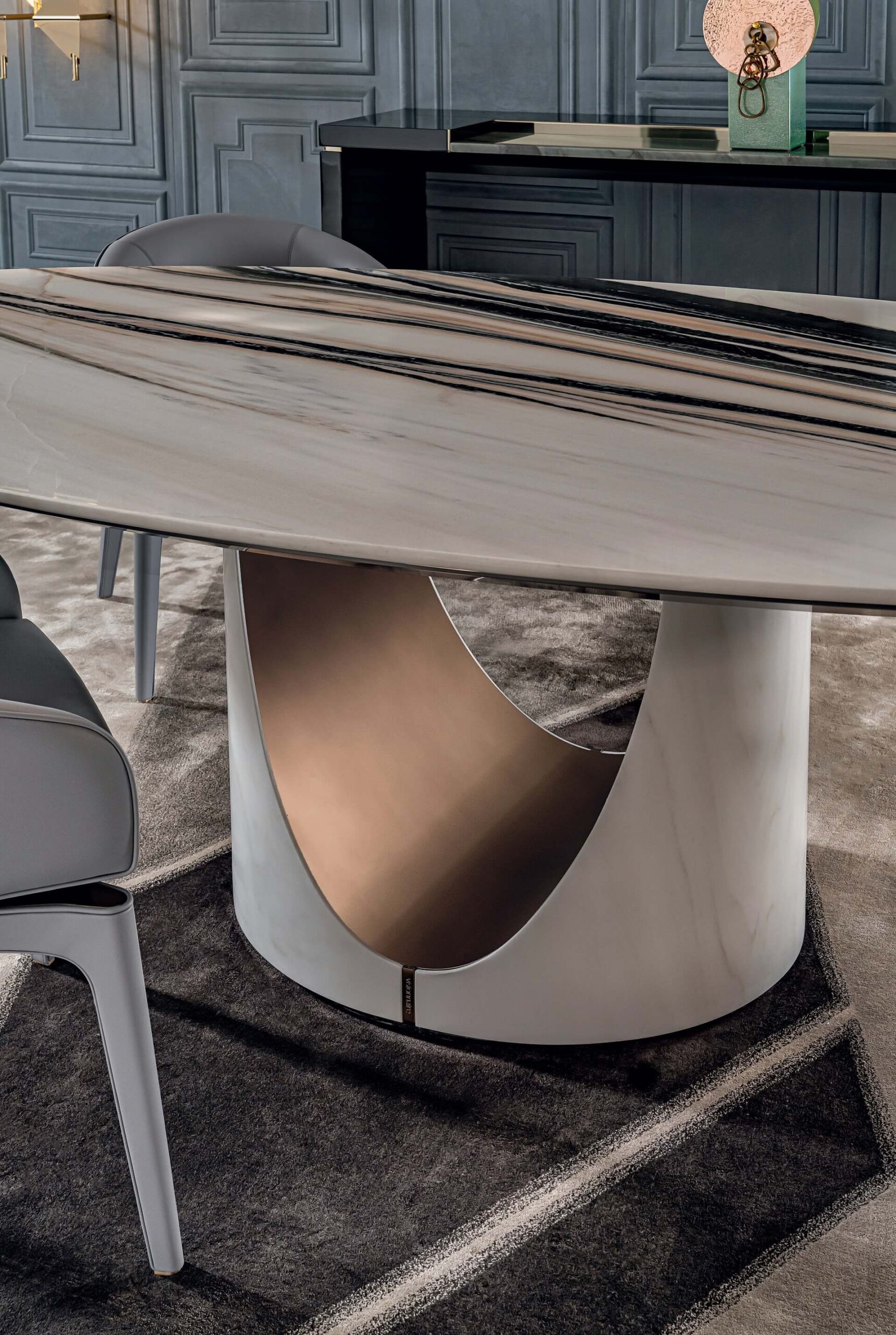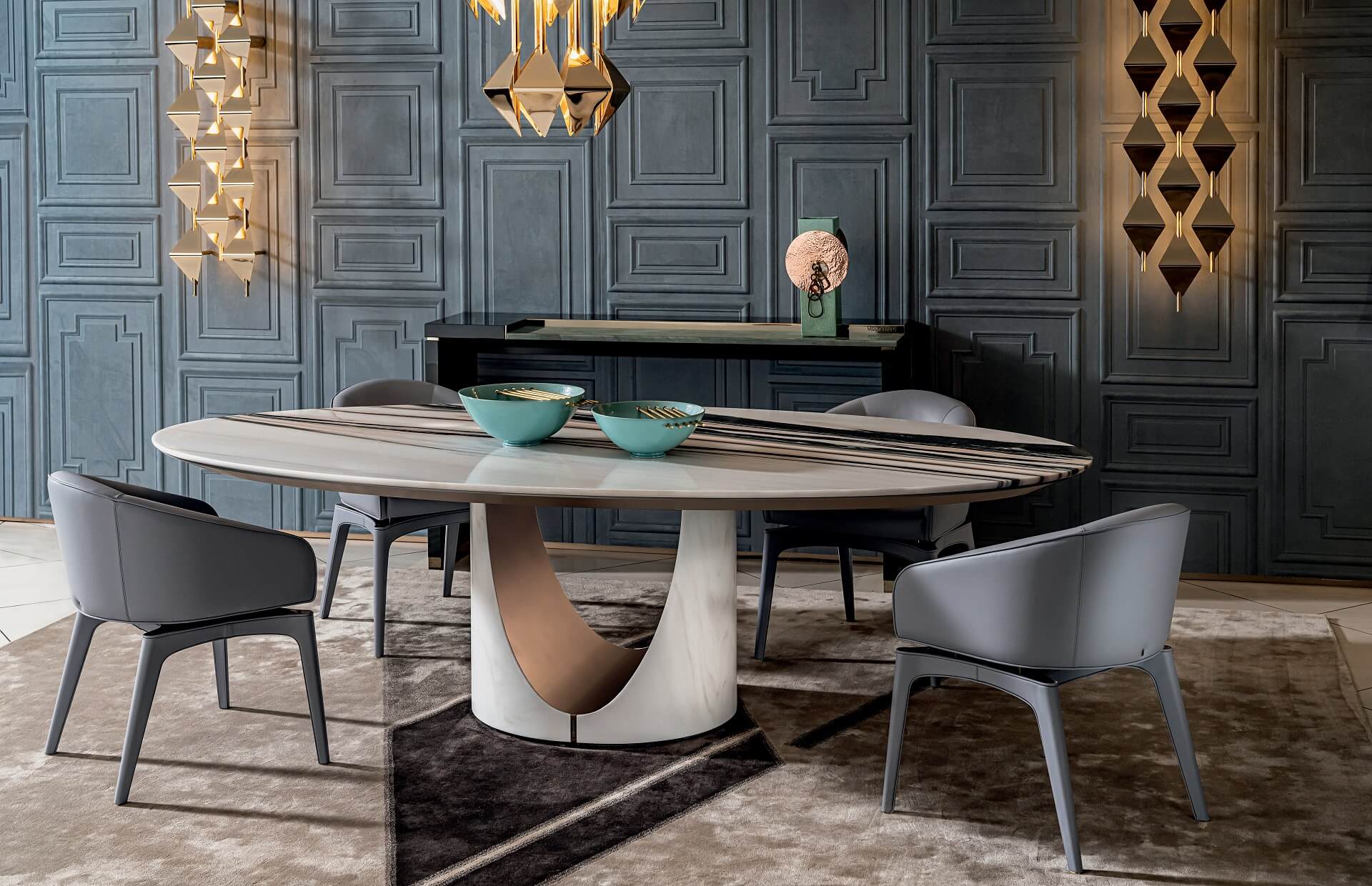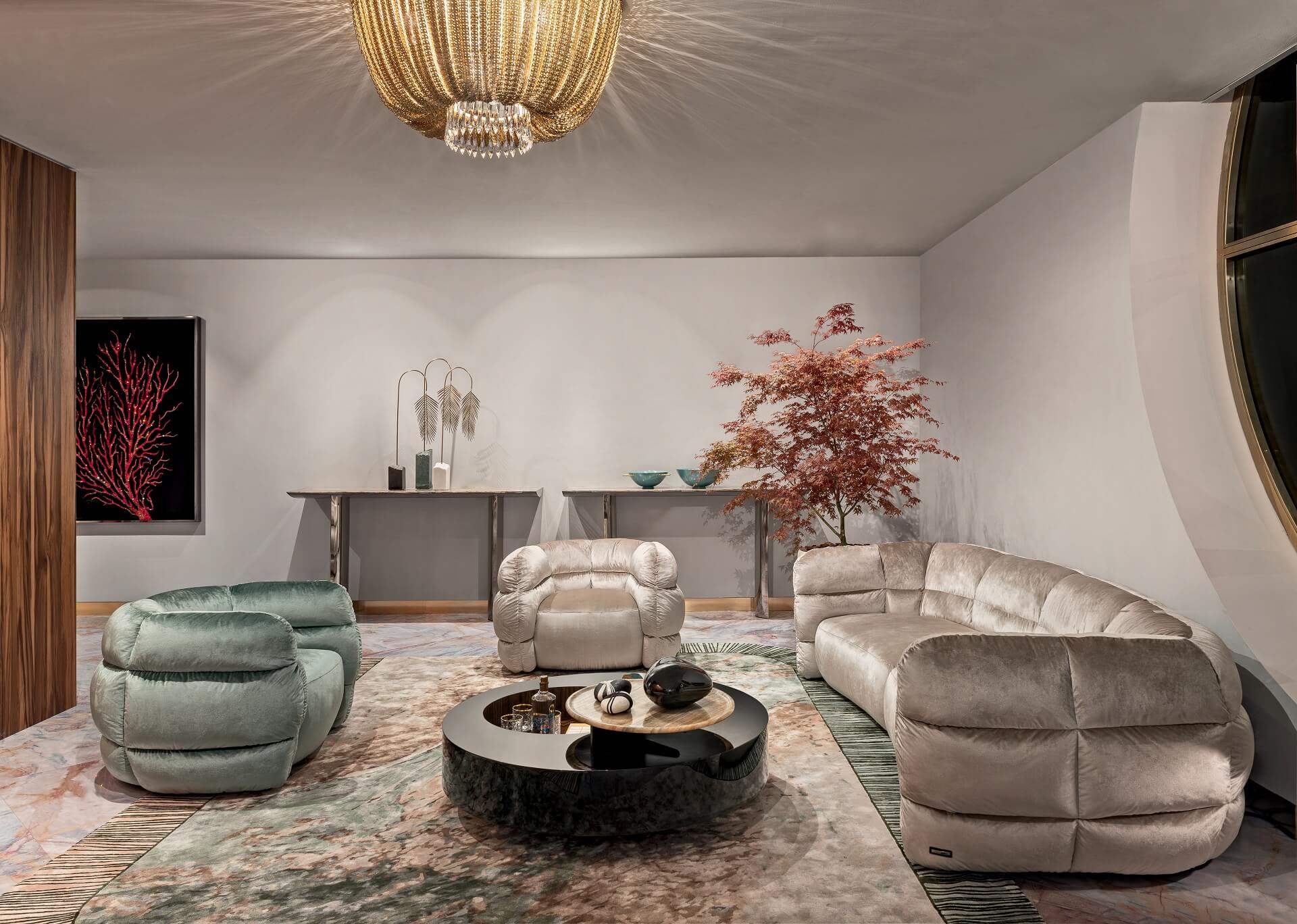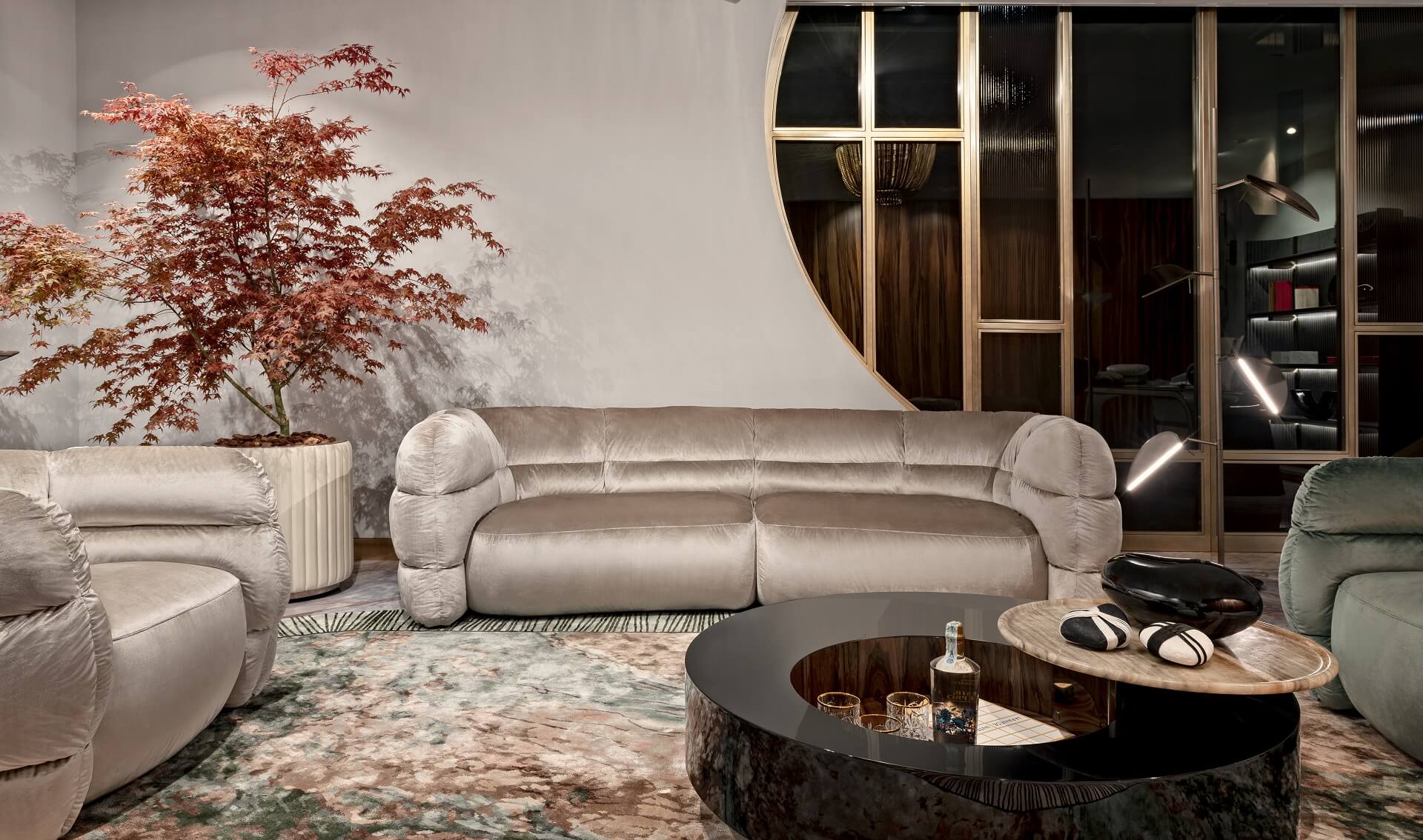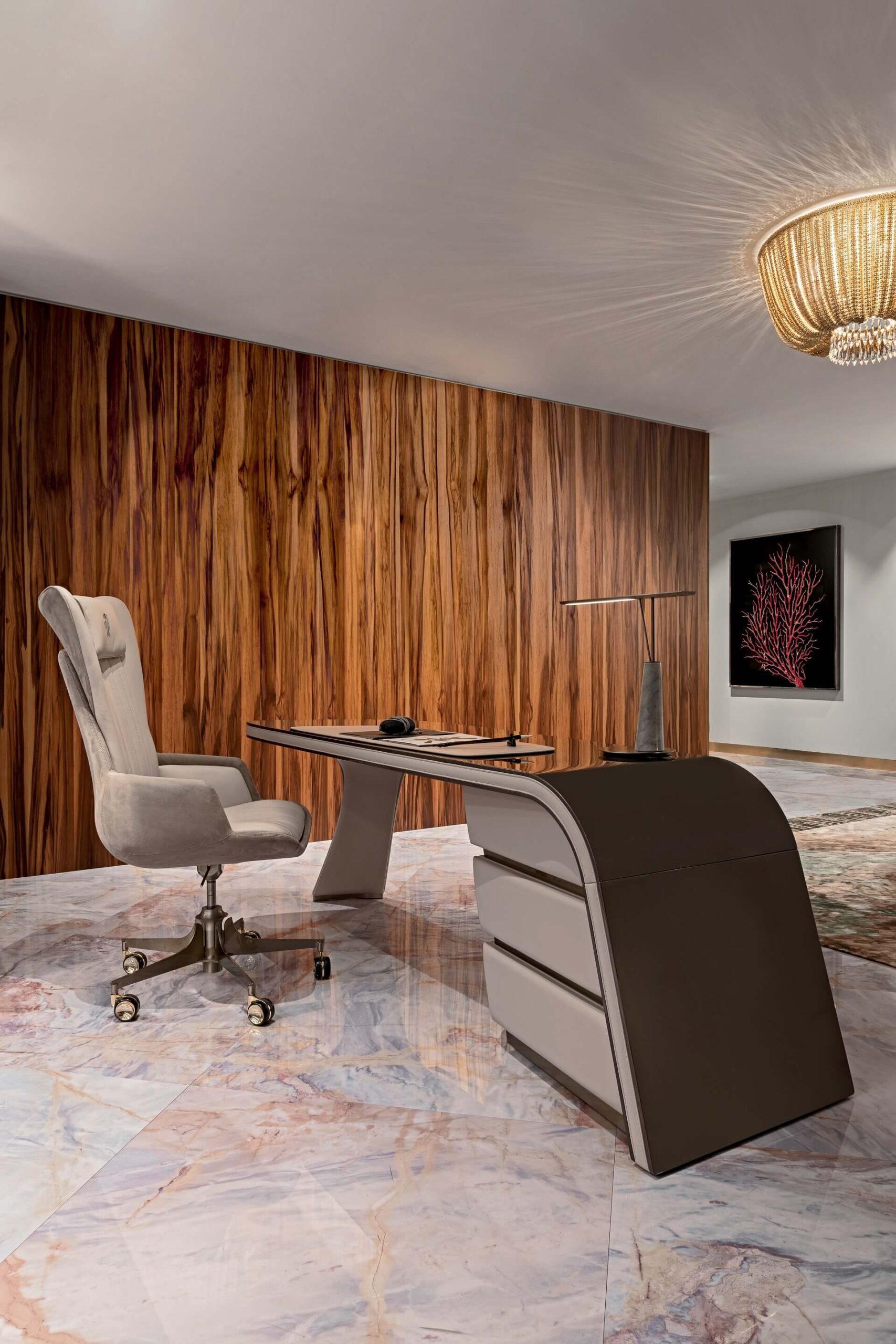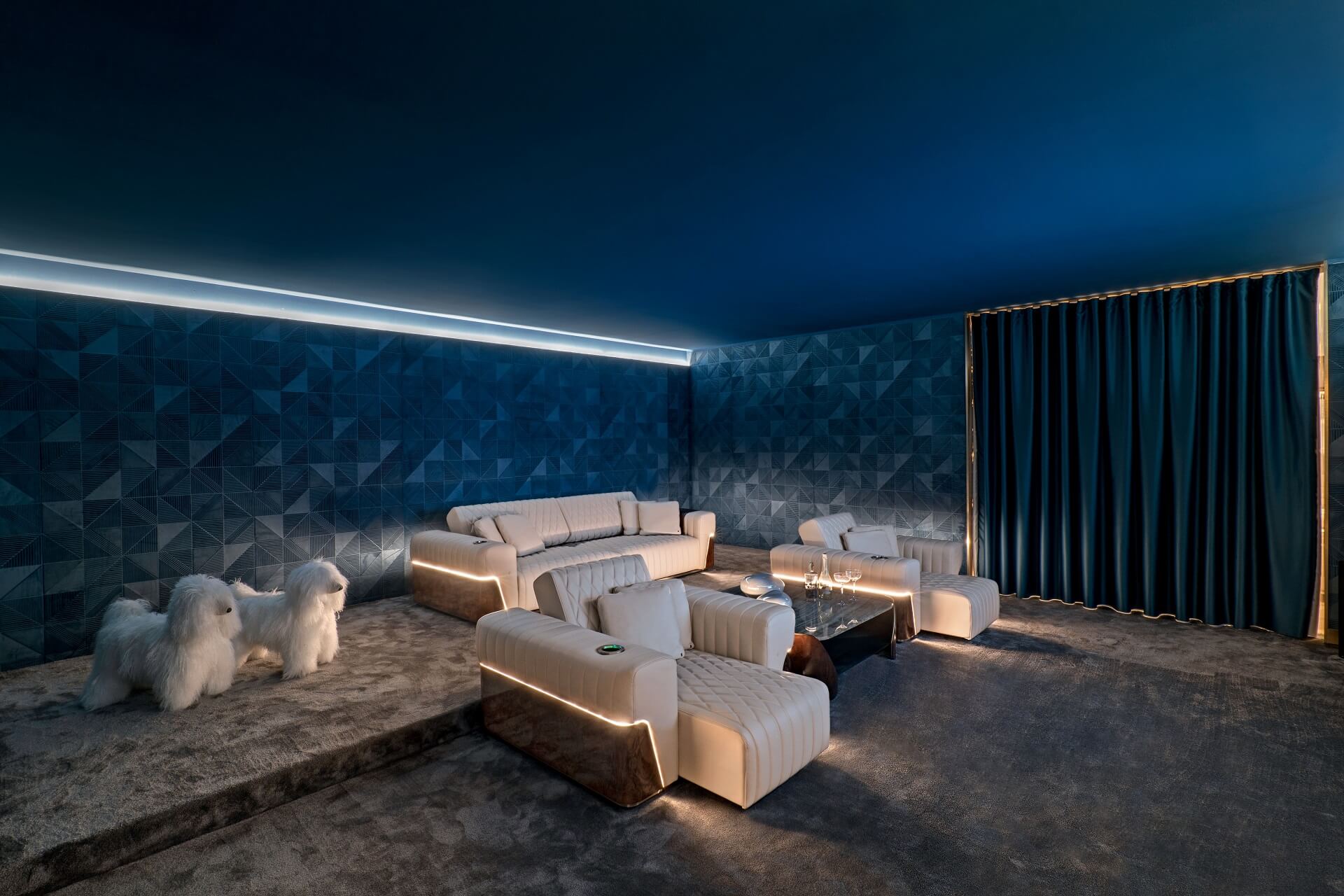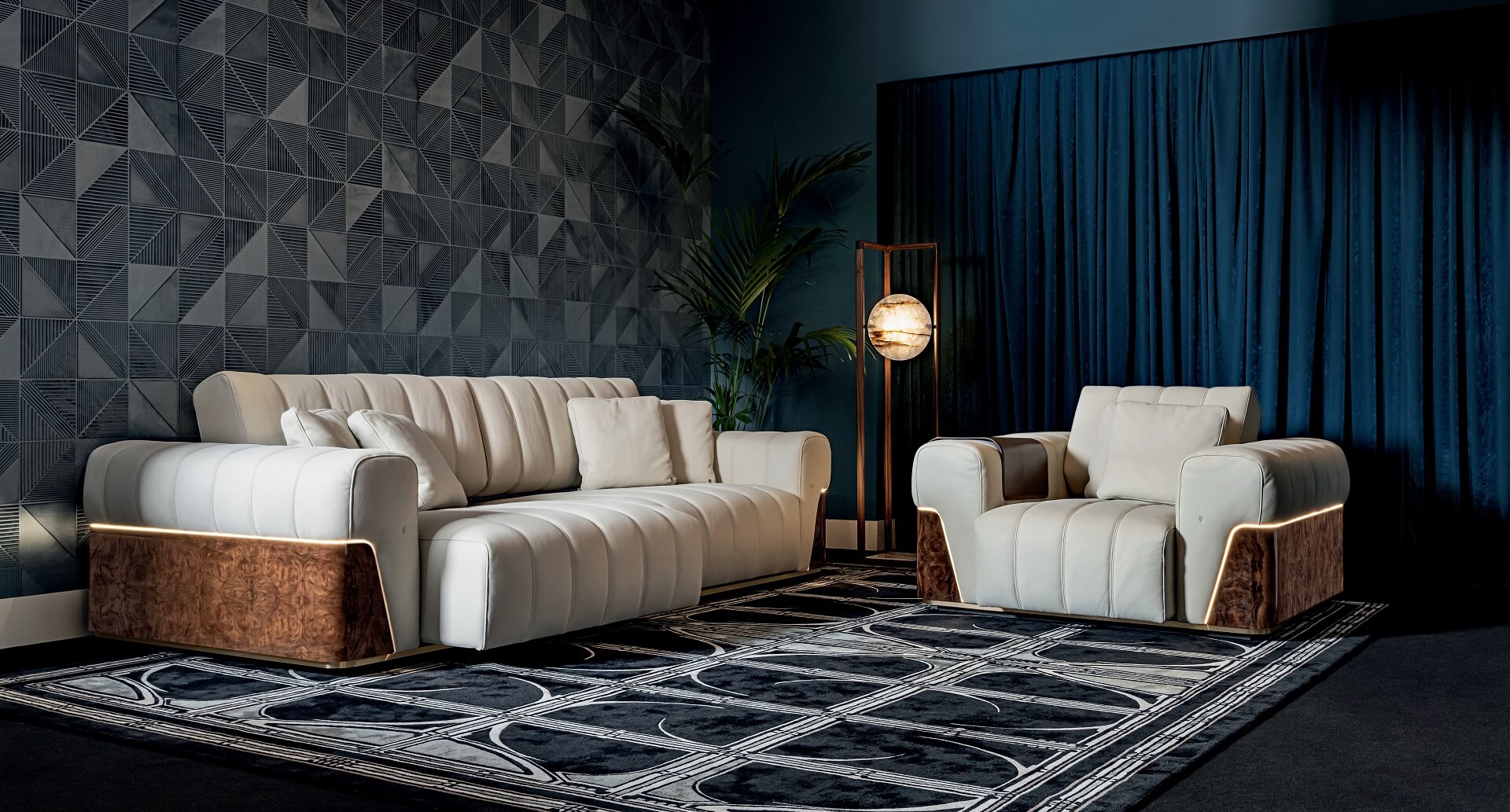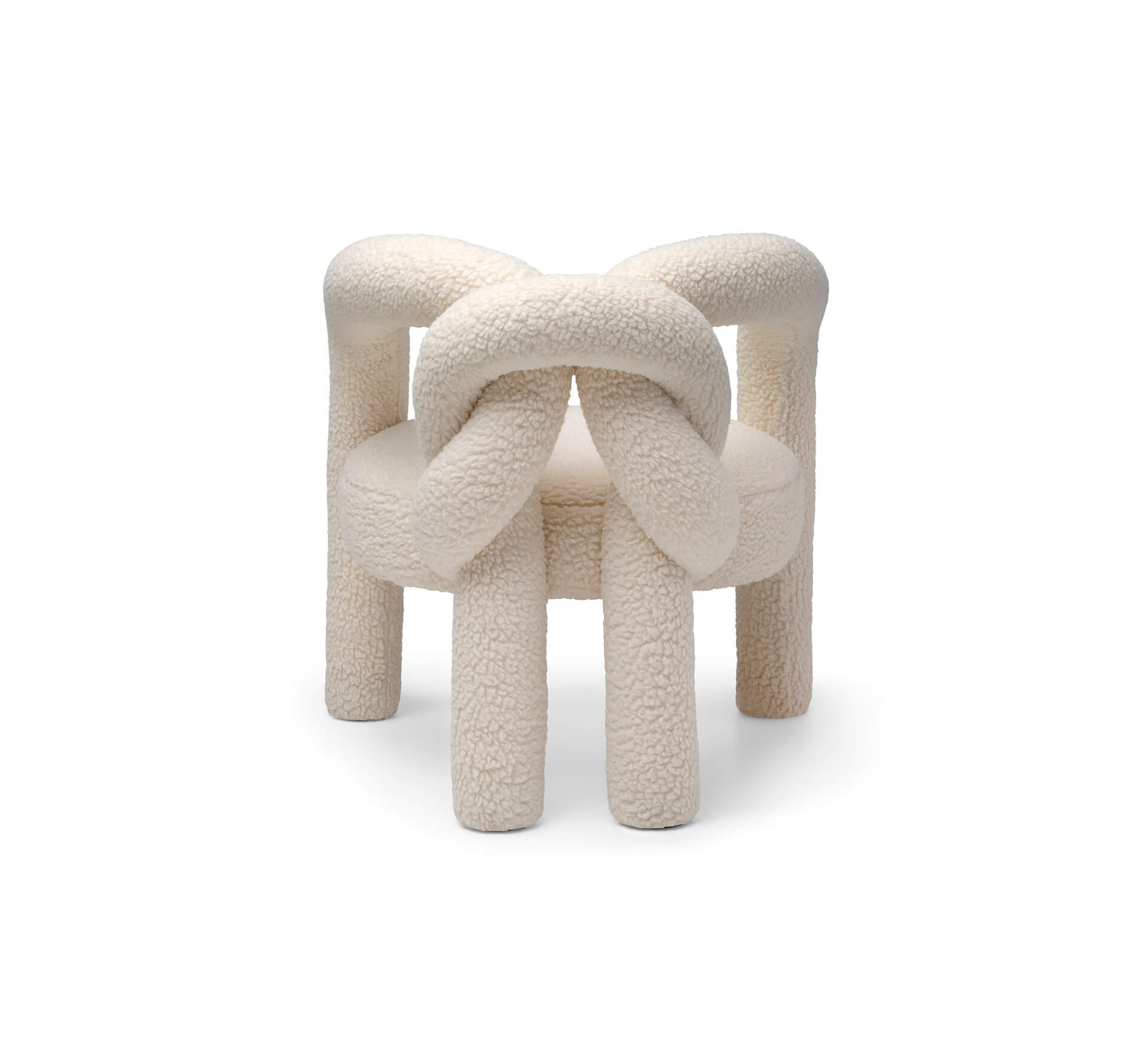In Japanese thought, a word exists – yūgen – that expresses a deep, mysterious sense of the beauty of the universe. Yūgen signifies finding our place in the world and feeling completely part of the space in which we live, identifying with it. It is both container and content at the same time, and its magic implies that space is never fixed but always open to what it could become.
Yūgen reminds us that we can live in harmony with the beauty that surrounds us, the space of our home. A home that for Visionnaire continues to take on the meaning of a place of joy, a theater of everyday beauty that becomes a sanctuary for our personal rituals.
Volare is the name of the new residential concept of Visionnaire, created to narrate a true philosophy of living and a sartorial approach to the production of unique objects.
Thanks to a collaboration with the designers Alessandro La Spada, Steve Leung, Mauro Lipparini, Draga&Aurel, Studiopepe, m2atelier, and Gupica, Volare is not simply the development of a new collection of products, but also a design manifesto of the contemporary home, based on centrifugal thinking that starts with the content to formulate the container, moving from the individual to the space. In short, to design a dream home requires knowing the innermost essence of its inhabitants.
The mythical concept of a house-temple opens the doors to the world of the Orient and its fascinating philosophical aspects. The spaces within the home are not simply defined by architectural functions, but organized on the basis of our emotions. Which spaces are set aside for family living and which for entertaining guests? How do we identify which spaces are most deeply linked to an individual dimension, establishing the most authentic and intimate perimeter of our life?
The kitchen is one of the zones of hospitality par excellence. Villa D’Este, designed by Mauro Lipparini, is a tribute to the collective dimension of living, not only within a personal family context but also in relation to the outside world, as a gesture of contamination and transformation in the space that symbolizes metamorphosis. Everyday life is enhanced by prestige and elegance in the most technological area of the home, thanks to the choice of refined materials like Stone Oak – the precious fossil wood formed by age-old processes of stratification of the earth – and undulated Calacatta Antique marble with its multiple veins.
Shifting into a more intimate area of the home for shared family life, we arrive in the Orient where nature, function, and image exist in unison, in keeping with the poetics of Steve Leung. The Nature’s Jewel Box collection – based on the finest cabinetmaking skills – pays homage to the regenerating force of nature in relation to the radical changes taking place in the world, exploring beauty from an unexpected perspective: that of the fascinating resilience of trees.
The new Duncan hideaway kitchen designed by Alessandro La Spada is like a treasure chest: the sliding panel is a surface in brass tiles arranged to form an elaborate geometric pattern, like a frieze and a precious “skin” containing the kitchen.
With a simple gesture of the hand or an automated control, the panels shift and vanish into lateral compartments, leaving the kitchen block completely visible. Here too, nature is the inspiration for a new design, with a textural effect of tree bark on the brass surface, creating a unique effect perceptible from a distance or up close.
With the Cameron table, the protagonist is the sculptural base: obtained by juxtaposing two symmetrical blocks of marble, the piece balances the fullness of stone with open spaces, underscored by the curved subtraction of material and a gleaming metal surface.
The new Bomber sofa designed by Alessandro La Spada has been conceived for family living, conveying contemporary, sophisticated research on curved forms. An enveloping sofa with soft and tubular volumes, to encourage relaxation, with references to the world of fashion and its soft quilted creations. The back, composed of various tapered and overlaid parts, as in the quilted structure of a down jacket, wraps and accommodates the seat.
The home theater is an important gathering place: a space formulated for entertainment, relaxation, and socializing. The new Brubeck upholstered model, with an external shell in briar and a typical quilted rhomboid motif for the cushions, takes its cue from the futuristic and experimental world of automobiles.
